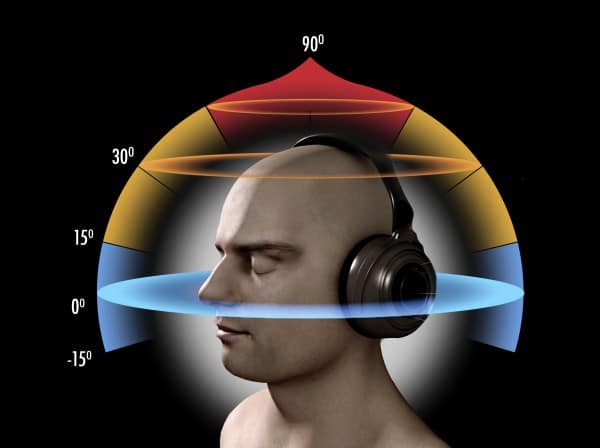

These are the albums that helped bring binaural back from the seemingly dead. Glenn Gould, Bach: The Goldberg Variations 1955 Performance Stravinsky, Le Sacre du Printemps / Rachmaninoff, Symphonic Dances Richard Strauss: Aslo Sprach Zarathustra / Camille Saint-Saens: Symphony No. Jamey Haddad, Mark Sherman & Lenny White, Explorations in Space and Time Rachmaninoff Plays Rachmaninoff - Zenph Re-Performance Lou Reed, Live: Take No PrisonersĪrt Tatum, Piano Starts Here - Zenph Re-performance

Check out those videos and the groundbreaking albums below - we hope it’ll all inspire you to create your own immersive recordings.Īnd if we left out any binaural album that deserve a place on this list, please let us know about it in the comments.

But nowadays all you need to record in binaural audio is a pair of wireless 3D audio headphones incorporated with microphones.Īs part of our ongoing Hooke Live Sessions series, we’ve recorded more than 60 bands and solo artists in binaural. Reed’s dummy head rig was expensive, too.
#BINAURAL RECORDING ADULTS MOVIE HOW TO#
See also How To Disable Microphone On Android 2023? Top Full Guide Unless you’re a major VR production company with millions in financial backing, you probably can’t afford the type of recording equipment that’s used to produce a VR concert. With the VR industry betting big on live concert experiences by Beck, Coldplay and Eric Church to drive headset sales, immersive 3D audio is now on the cusp of going mainstream.īut here’s the thing: VR headsets are only designed for consuming content, not creating it. As we’ve said in this space before, today’s most revolutionary tech innovations inspire us to both create and consume. The Rolling Stones picked up the binaural torch, then passed it to Pearl Jam.Īnd in May, Perfume Genius released a critically acclaimed album recorded entirely in binaural. Reed went on to record two more albums in binaural, 1978’s Live: Take No Prisoners and 1979’s The Bells. As with White Light, it would take a little while for other artists to follow Reed’s lead. Plus, headphones were clunkier and a lot less common back then. But his record label, Arista, was expecting a studio record, so Reed had to make certain compromises (like eliminating most of the crowd noise). When played back through headphones, binaural audio makes you feel like you’re in the same place where the recording was made.įor Street Hassle, Reed recorded live renditions of his latest material with a dummy head outfitted with a microphone lodged in each ear. See also Where Is Microphone On Macbook Pro? Top Full Guide 2023Ī binaural recording produces a more immersive listening experience than the standard stereo mix by accounting for the space between the ears, which affects the way we hear, well, everything.

In 1978, Reed released Street Hassle - the first commercial pop album recorded in binaural audio. Now, with more and more musicians exploring the limitless potential of 3d audio, a lesser-known aspect of Reed’s pioneering legacy is coming to the fore. It was met with crickets.īut eventually White Light paved the way for punk rock, indie rock, and pretty much every other genre of noise-driven rock you can name. White Light was a deafening, maniacal assault on the senses, the likes of which had never been heard before. While it may or may not have stuck with the audience in the time being, they were resurrecting a form of audio that had been sleeping for quite some time.įrom his early recordings with the Velvet Underground to his restlessly innovative solo career, the late great Lou Reed was always ahead of the curve.Īs Brian Eno once said, even though the Velvet’s 1968 album White Light White Heat sold just 30,000 copies in its first five years, “everyone who bought one of those 30,000 copies started a band.” They were bringing something that was, albeit foreign and cool, to a commercial forefront. These were some artists that were among the first to produce something that resembled binaural. Once artists started to play around with placement of speakers and started accounting for the space between your ears, they found out how to make the audience feel like they were really present in the recording space.


 0 kommentar(er)
0 kommentar(er)
